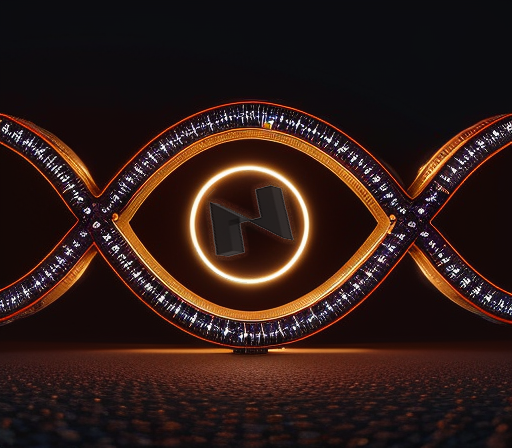An in-depth exploration of quantum resistance in blockchains, addressing the potential threats posed by quantum computing advancements and the measures being taken to secure blockchain networks for the future.

As the field of quantum computing rapidly advances, concerns are growing about the potential impact of these powerful machines on the security of blockchain networks. Quantum computers, with their ability to solve complex problems at an unprecedented speed, could undermine the cryptographic foundations of current blockchain technologies. This article examines the concept of quantum resistance in blockchains and the measures being taken to ensure the security and integrity of these networks in a post-quantum computing world.
The Quantum Computing Threat to Blockchain Security
Quantum computers leverage the principles of quantum mechanics to perform computations that classical computers cannot efficiently solve. They use quantum bits, or qubits, instead of the traditional binary bits used by classical computers. Qubits can exist in multiple states simultaneously, allowing quantum computers to perform numerous calculations in parallel. This capability, known as quantum parallelism, could enable quantum computers to solve complex problems, such as breaking cryptographic schemes, at speeds many orders of magnitude faster than classical computers.
The cryptographic algorithms that secure today's blockchain networks, like the widely-used elliptic curve cryptography (ECC), rely on the assumption that certain mathematical problems are too computationally intensive for classical computers to solve within a reasonable timeframe. However, with the advent of powerful quantum computers, this assumption may no longer hold true. For instance, Shor's algorithm, a quantum algorithm, can factor large integers and solve discrete logarithm problems much more efficiently than any known classical algorithm, potentially rendering ECC-based public-key cryptography vulnerable.
Preparing Blockchains for a Quantum Computing Future
To address the potential threats posed by quantum computing advancements, researchers and developers are exploring the concept of quantum-resistant blockchains. These networks employ cryptographic schemes that are believed to be resistant to attacks by both classical and quantum computers. The goal is to develop blockchain systems that can withstand quantum computers' computational prowess while maintaining their networks' security and integrity.
One approach to achieving quantum resistance in blockchains is to implement post-quantum cryptography, also known as quantum-resistant cryptography. Post-quantum cryptographic algorithms are designed to be secure against attacks by both classical and quantum computers. These algorithms are based on mathematical problems that are believed to be hard for both types of computers to solve, such as lattice-based cryptography, code-based cryptography, multivariate cryptography, and hash-based cryptography.
Blockchain projects are already incorporating post-quantum cryptographic schemes to prepare for a quantum computing future. One of the earliest blockchain projects to tackle this problem was the QRL (Quantum Resistant Ledger) project, launched in 2018, with a blockchain that utilizing the eXtended Merkle Signature Scheme (XMSS), a hash-based digital signature scheme considered to be quantum-resistant.

In addition to employing post-quantum cryptography, hybrid cryptographic schemes can also be used to enhance the quantum resistance of blockchains. These schemes combine classical cryptographic algorithms with post-quantum algorithms, aiming to provide robust security while maintaining compatibility with existing systems. Hybrid schemes can serve as a transitional approach for blockchain networks, allowing them to migrate towards fully quantum-resistant solutions gradually.
Incorporating Quantum-Resistant Cryptography in Nervos CKB
The Nervos Network, a multi-layered blockchain ecosystem, is proactively preparing for the challenges posed by quantum computing. Its Layer 1, the Common Knowledge Base (CKB), is designed to be flexible and adaptable, allowing for the incorporation of quantum-resistant cryptographic primitives to secure the network against potential quantum computing threats.
The CKB's unique accounting model, known as the Cell model, combines the best aspects of the UTXO and account models, providing a generalized and abstract structure for storing arbitrary data and code. The Cell model enables Nervos to treat all assets, including user-defined tokens and NFTs, as first-class citizens. This means that cryptographic algorithms and data structures can be implemented on CKB as scripts stored within cells, rather than being hardcoded into the virtual machine (VM) like in other blockchains. This adaptability allows for a more agile and future-proof network, capable of upgrading its basic cryptographic primitives to quantum-resistant ones without undergoing a hard fork.
Additionally, the CKB's transaction execution environment, the CKB-VM, is a virtual machine based on the RISC-V computer instruction set, providing raw instructions directly to CPUs. This low-level design leads to unprecedented flexibility and enables developers to use any programming language or cryptographic primitive when building smart contracts on CKB. This crypto-agnosticism allows for the easy incorporation of quantum-resistant cryptographic algorithms when the need arises, ensuring that the Nervos Network remains secure in a post-quantum computing world.
In summary, the innovative design of Nervos' Layer 1, the Common Knowledge Base, with its Cell model and RISC-V-based virtual machine, allows for the seamless incorporation of quantum-resistant cryptographic primitives. As the threat of quantum computing looms on the horizon, CKB's flexibility and adaptability ensure that the Nervos Network remains secure and resilient in a post-quantum computing world.
Conclusion
As quantum computing technology advances, the potential threats it poses to the security of blockchain networks become increasingly critical. Quantum resistance in blockchains is an essential area of research and development, aiming to protect these networks from the powerful computational capabilities of quantum computers. By incorporating post-quantum cryptography, hybrid cryptographic schemes, and other innovative approaches, blockchain developers and researchers are working to ensure blockchain networks' long-term security and integrity in a post-quantum computing world.

